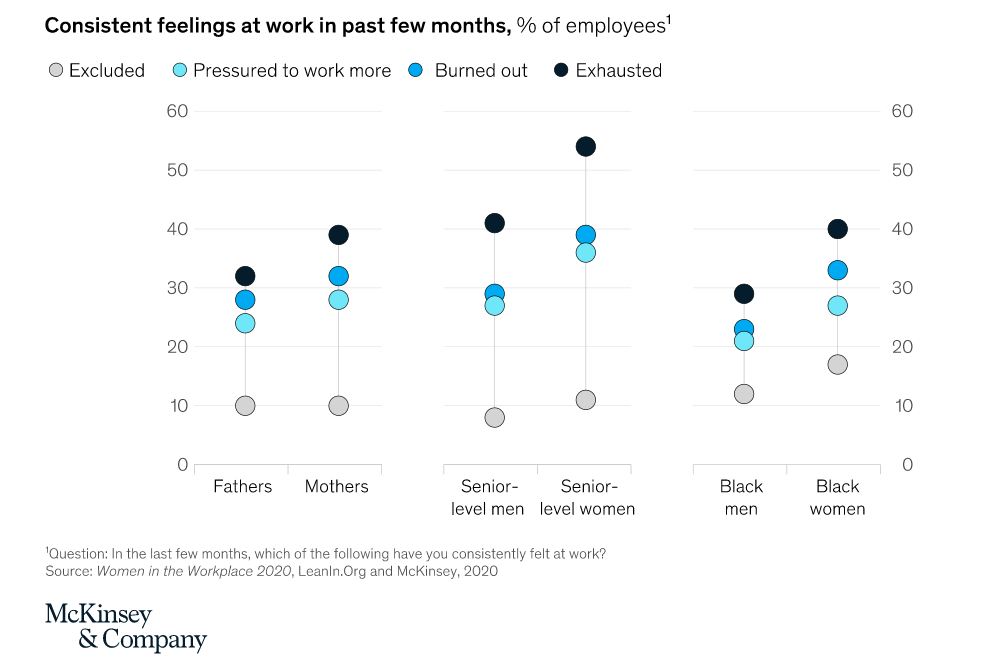COVID-19 and its impact on working women
COVID-19 had a major impact on businesses around the world. Small and large businesses closed their doors temporarily, some permanently and employees who were still employed held their breath. As we come out of the pandemic, and more and more vaccines are being put into arms, let’s take a look at those who were most affected by the pandemic: working women. Since WWII, the US has not seen such a deep, sustained decline in the female labor force. Female participation in the workforce is currently at it lowest: 57% - according to the National Women’s Law Center. While men and women left the workforce in droves, women (and specifically, those of color) were affected at a much larger rate than their male counterparts. For example, Hispanic women currently face double the unemployment rate than Hispanic males do. Women also often bear the burden of caregiving and the unpaid ‘second shift’ of cooking, cleaning and other household duties after they come home from work. And this has an impact. 1 in 4 women are now considering leaving the workforce or downshifting in their careers - according to LeanIn.org. Report from McKinsey & Company showing the impact the pandemic has had on how employees feel at work.
So, what can we do about these (depressing) statistics? Employers can start by recognizing the unique challenges COVID-19 has placed on families. By offering flexible workplaces, employers can hold on to more of their female workforce by giving them more options than a 9-5 office job. Options like working from home or different hours of operation can give women more of an opportunity to balance both home and work. Bringing women back who were furloughed, laid-off or resigned is another great idea. Returning women to work, who already have the skills and training tailored to their previous employer, will save businesses time and money. Even if your female employees don’t return to the exact same role, employers can utilize the skills their previous employees have and retrain so that they fit their new role.Recognize the current disparities women of color face in the workforce and make meaningful changes to your business. Look around at meetings and notice if you have employees who are minorities in major roles at your business. Go a step further and look at your hiring statistics. Are you hiring people of color for upper management roles? Are your recruiting efforts directed at people of color?“1 in 4 women are now considering leaving the workforce or downshifting in their careers.”
How can you help as an employee? Recognize women and the challenges they face. Tell your boss about the amazing thing your female coworker did, and even better, tell her! If you notice your coworker is struggling with their workload, and you have the ability to help, do. While we are all struggling during this pandemic, some are definitely struggling more than others. These ideas don’t have to just apply to employees who are high-earners in an office setting. These ideas can be applied in all areas of businesses, and should be maintained even when the pandemic is over. Women are an essential part of the workforce and our families, with a few changes throughout businesses, we can support their careers and growth. It just takes a bit of creativity and some thinking outside of the box. Need help with implementing some changes? Please reach out to us at Rethink Resources! 